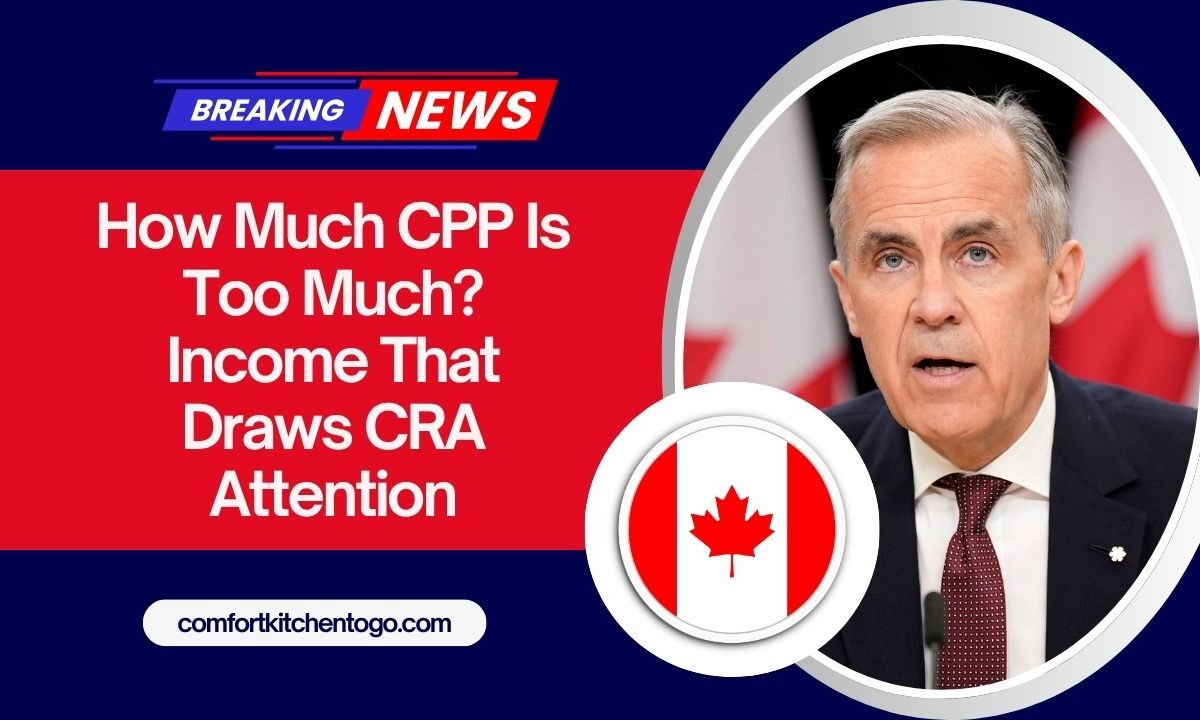Retirees and working Canadians who receive Canada Pension Plan (CPP) payments often wonder: Is there such a thing as earning too much?
While the Canada Revenue Agency (CRA) doesn’t impose a hard limit on how much income is “too much,” certain thresholds and income combinations can raise red flags.
Let’s break down what income levels can draw attention, how to stay compliant, and how to protect your benefits.
When Does the CRA Take Notice?
The CRA generally doesn’t initiate audits based on a specific CPP amount alone. However, scrutiny often comes from mismatches, benefit eligibility issues, or undeclared income. These are the key areas of concern:
1. CPP2 Contributions:
In 2025, the maximum pensionable earnings are set at $71,300, with an additional earnings limit up to $81,200. Income above the first limit requires second-tier CPP (CPP2) contributions. This new layer adds complexity and is carefully monitored for accuracy.
2. GIS Cutoff Threshold:
If your annual income exceeds $22,272 as a single senior, your eligibility for the Guaranteed Income Supplement (GIS) is affected. When income reported doesn’t align with benefit claims, it can trigger a CRA review.
3. Unreported Income:
Early retirees receiving CPP while working part-time or freelancing must declare all income. Undeclared earnings while drawing CPP benefits are a major red flag.
4. OAS Clawback Risk:
While not directly related to CPP, if your total annual income surpasses approximately $91,000, the CRA may claw back a portion of your Old Age Security (OAS). If this income is not properly declared, it increases the risk of audit.
CPP & CRA Income Overview
| Income Area | 2025 Amount | CRA Action Triggered |
|---|---|---|
| CPP Contribution Ceiling | $71,300 | Above this, CPP2 kicks in – requires correct contributions |
| Additional Contribution Limit (CPP2) | Up to $81,200 | Additional income subject to monitoring for compliance |
| GIS Cutoff (Single) | $22,272 | Above this affects GIS eligibility – likely CRA review |
| OAS Clawback Threshold | $91,000 | CRA may reduce OAS and review income sources |
How CRA Flags Incomes
The CRA uses several techniques to monitor CPP-related issues:
- Cross-referencing: They compare declared income with your CPP contribution records.
- Audit alerts: Sudden increases in pensionable income without supporting employment or self-employment details.
- Undeclared earnings: Particularly from part-time jobs or freelance work after starting CPP.
- Overpayments: Receiving CPP while working and not contributing or misreporting can trigger benefit overpayment recovery.
Tips to Avoid CRA Trouble
Staying below certain income limits is helpful, but it’s more important to stay transparent and accurate with your filings. Here’s how:
- Report All Income Sources
Whether it’s rental income, consulting, or dividends—everything must be included in your tax return. - Track CPP2 Contributions
Ensure your employer or payroll provider properly calculates and remits contributions for income between $71,300 and $81,200. - Avoid Double-Dipping Errors
If you are drawing CPP and earning income, you must also continue contributing if you’re under age 70 unless you’ve opted out after 65. - Keep GIS and OAS Eligibility in Mind
Plan withdrawals or taxable events (like RRSP conversions) carefully if you’re close to income thresholds that affect these benefits.
Can You Supplement Your CPP Safely?
The maximum CPP payment in 2025 is expected to reach around $1,433 per month, while the average remains significantly lower at $845. That’s often not enough for a comfortable retirement, which is why many retirees seek extra income.
Dividend-paying stocks, TFSA withdrawals, or RRIF income are commonly used to supplement CPP. However, always be mindful of how these amounts affect your total net income, especially for OAS or GIS.
You can also delay CPP or OAS benefits for larger payouts. For example, delaying CPP beyond 65 increases the benefit by 0.7% per month, and delaying OAS adds 0.6% per month to your payment.
Quick Summary of Key Numbers
| CPP Metric | Value (2025) |
|---|---|
| Max Monthly CPP | $1,433 |
| Avg Monthly CPP | $845 |
| Max Pensionable Earnings | $71,300 |
| Additional Earnings for CPP2 | $81,200 |
| GIS Cutoff (Single Individual) | $22,272 |
| OAS Clawback Begins At | ~$91,000 |
There’s no magic number that automatically causes the CRA to audit your CPP payments, but your total income, how you report it, and your consistency across different benefit programs matter a great deal.
To avoid issues, always ensure your CPP contributions align with your declared income, and be especially cautious if your total income edges past thresholds like the CPP2 contribution limit or the GIS/OAS clawback triggers.
Remember, transparency is more important than staying under a specific number. A well-documented and honest tax filing ensures you receive your full CPP entitlements while staying off the CRA’s radar.
FAQs
Will earning over $71,300 trigger a CRA audit?
Not automatically. But income above this amount is subject to CPP2 contributions, and mismatches could raise red flags.
Does working after starting CPP raise CRA concerns?
It’s fine to work, but all employment or self-employment income must be reported. Unreported income is a major concern for CRA.
Can dividend income affect my CPP?
Dividend income doesn’t reduce CPP payments but counts toward total taxable income, which may affect GIS or OAS benefits.
